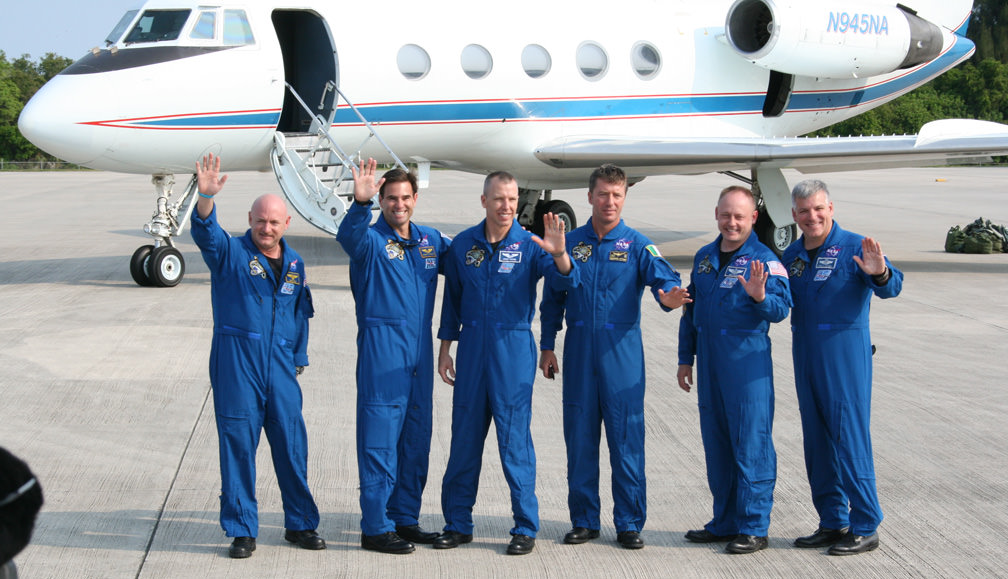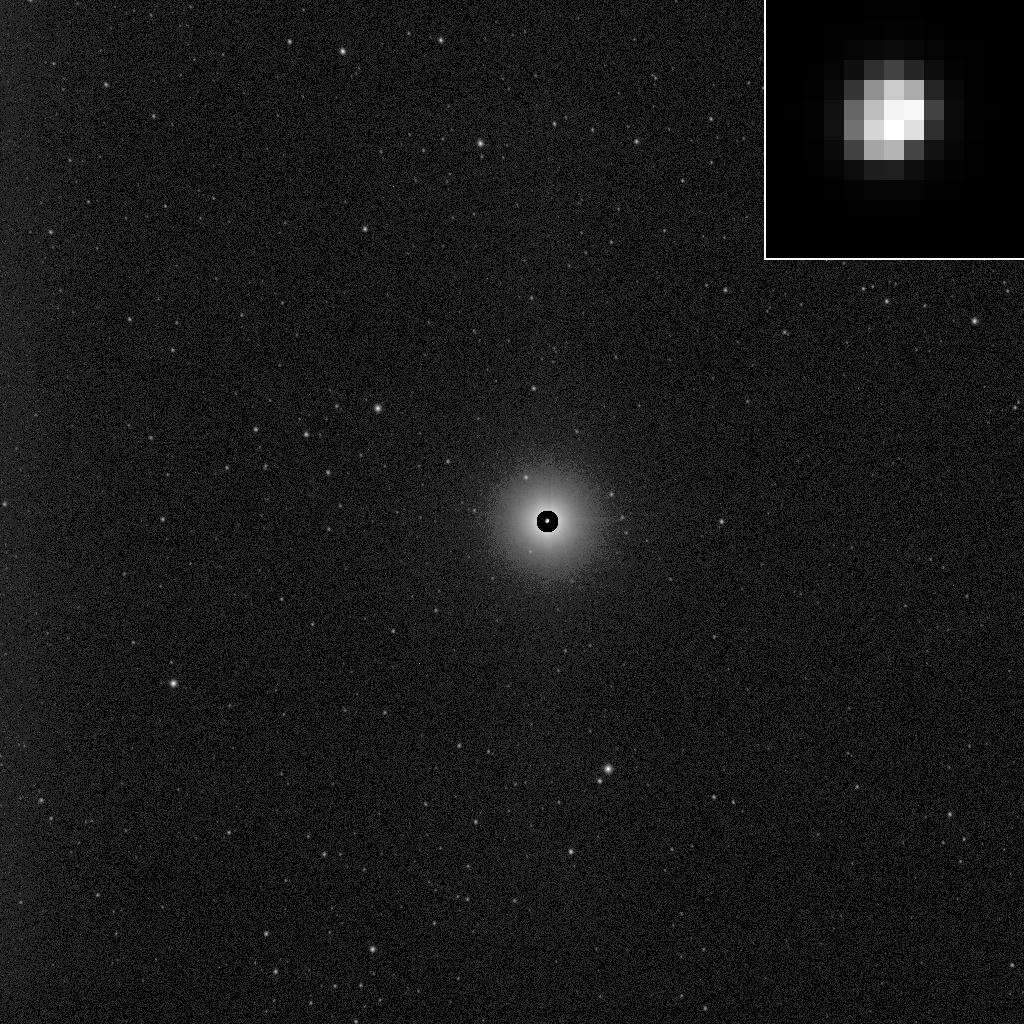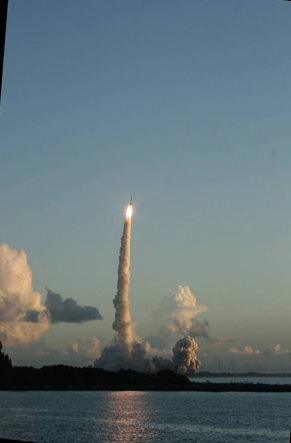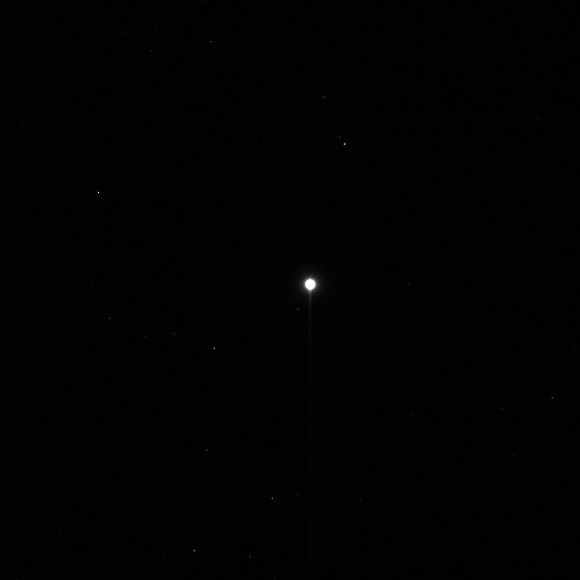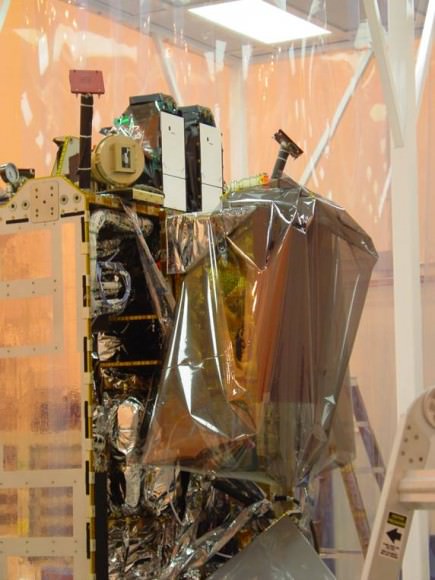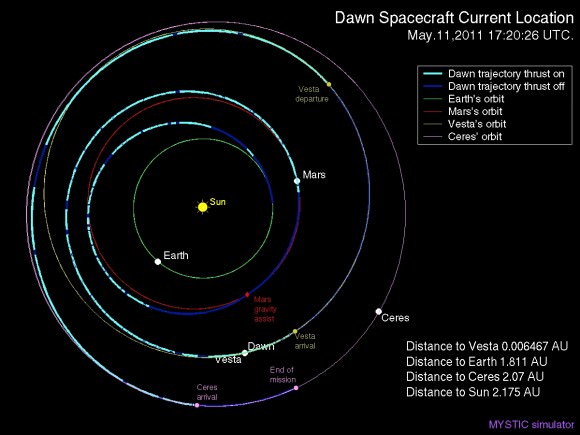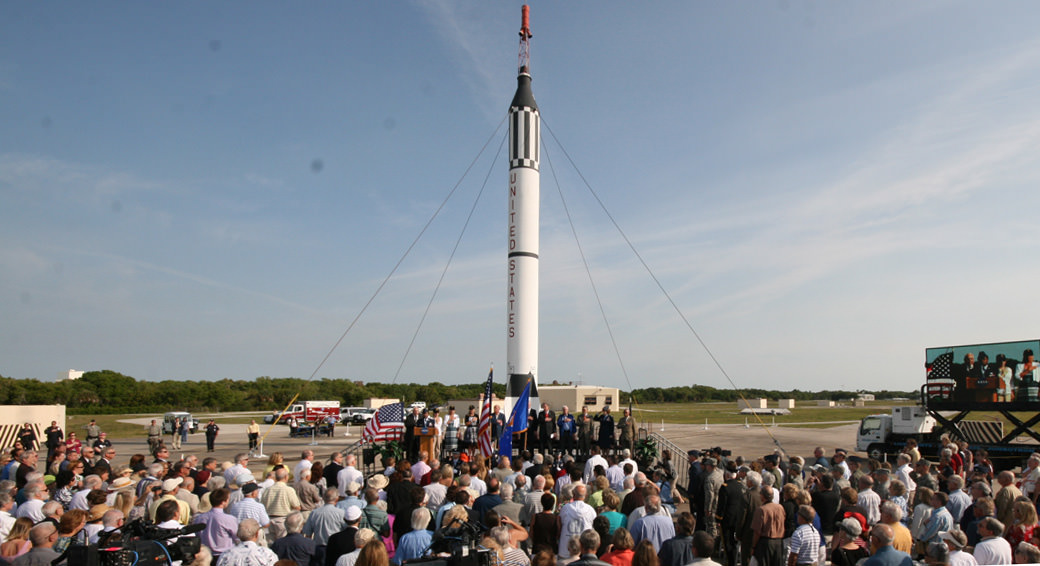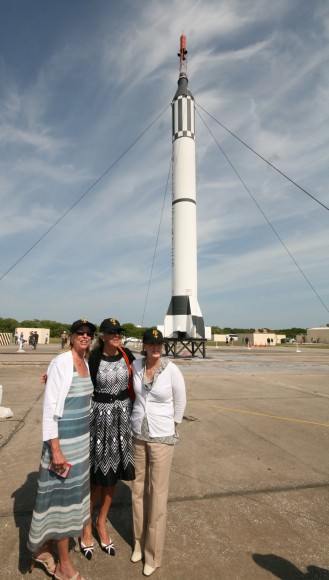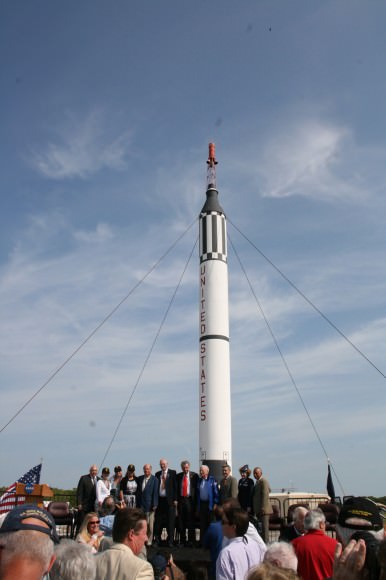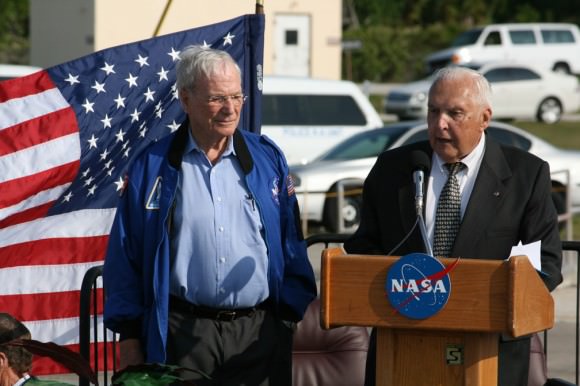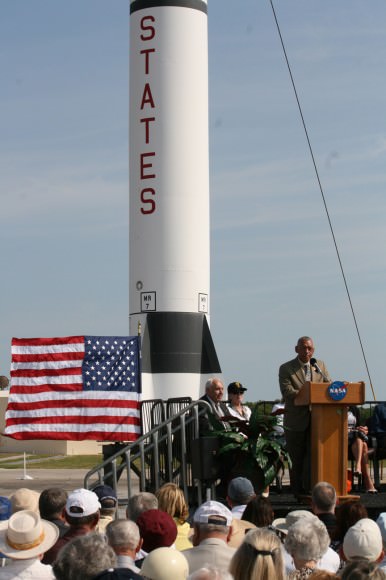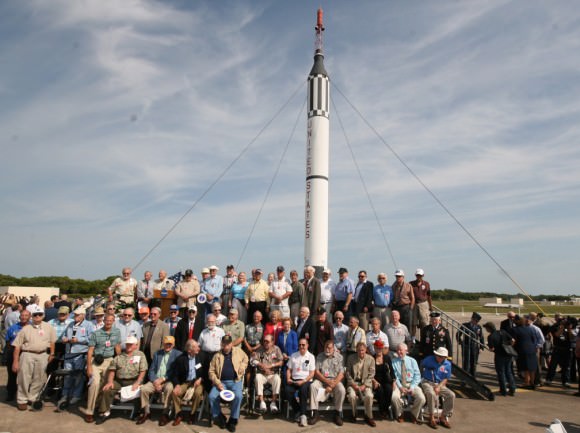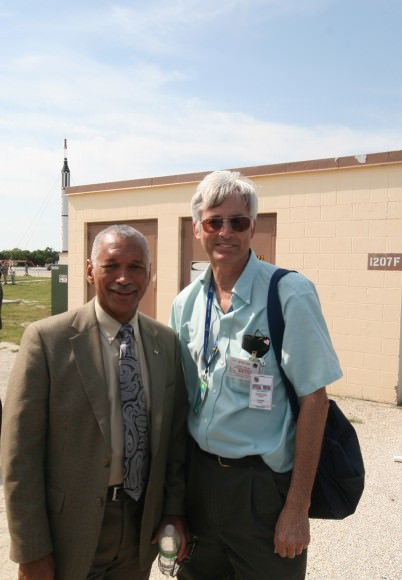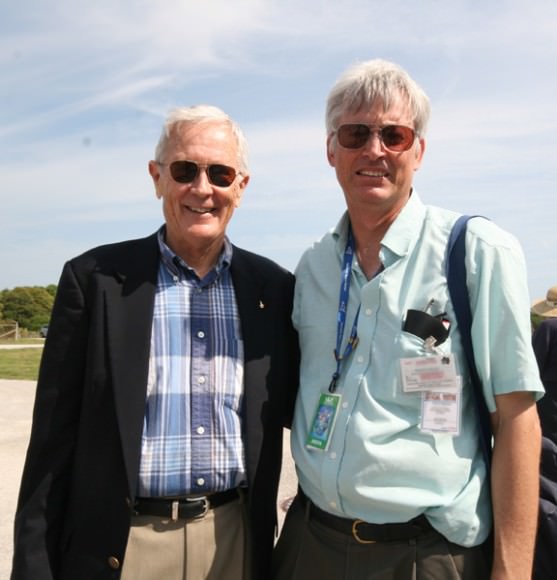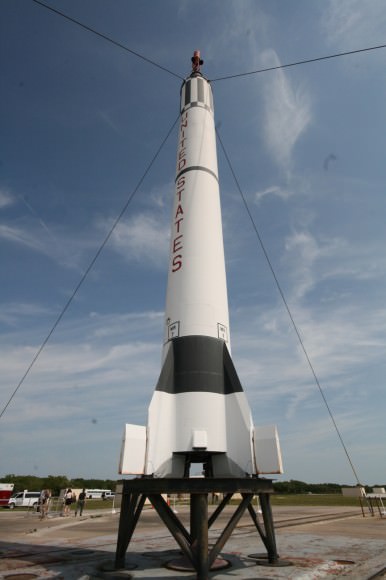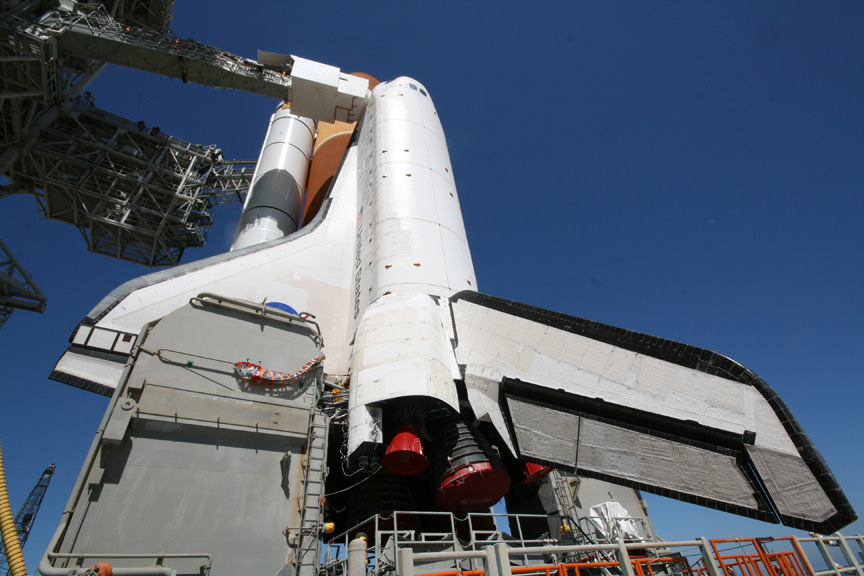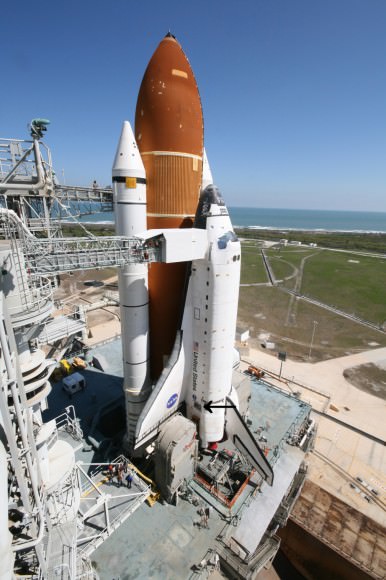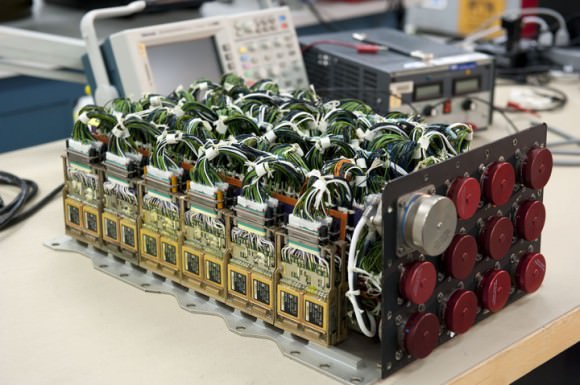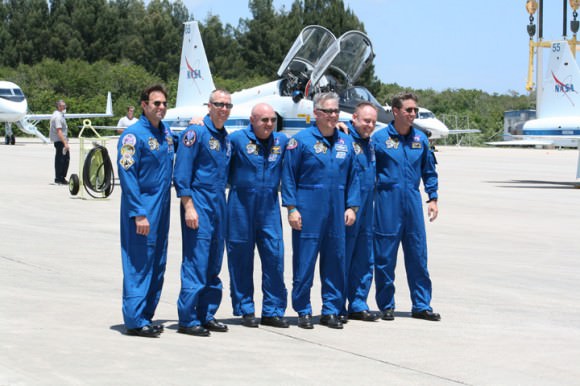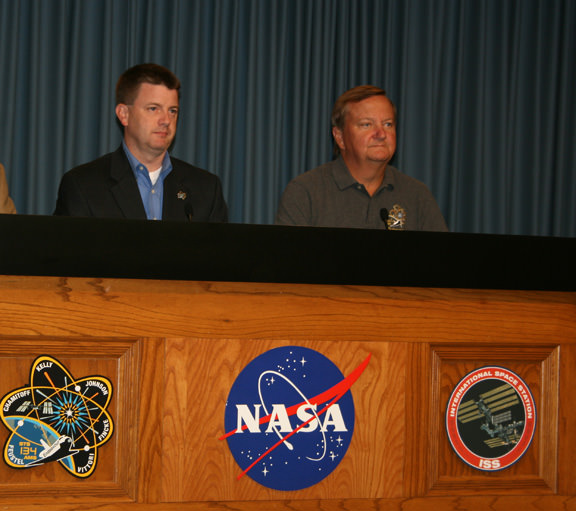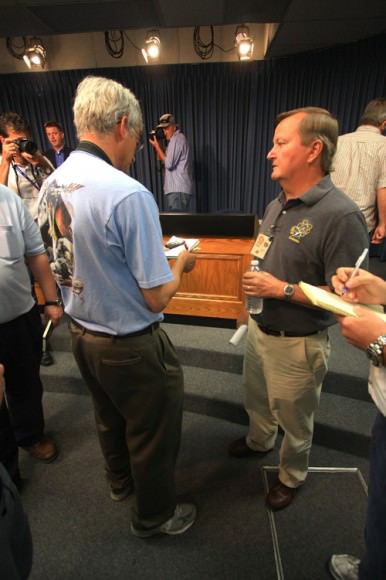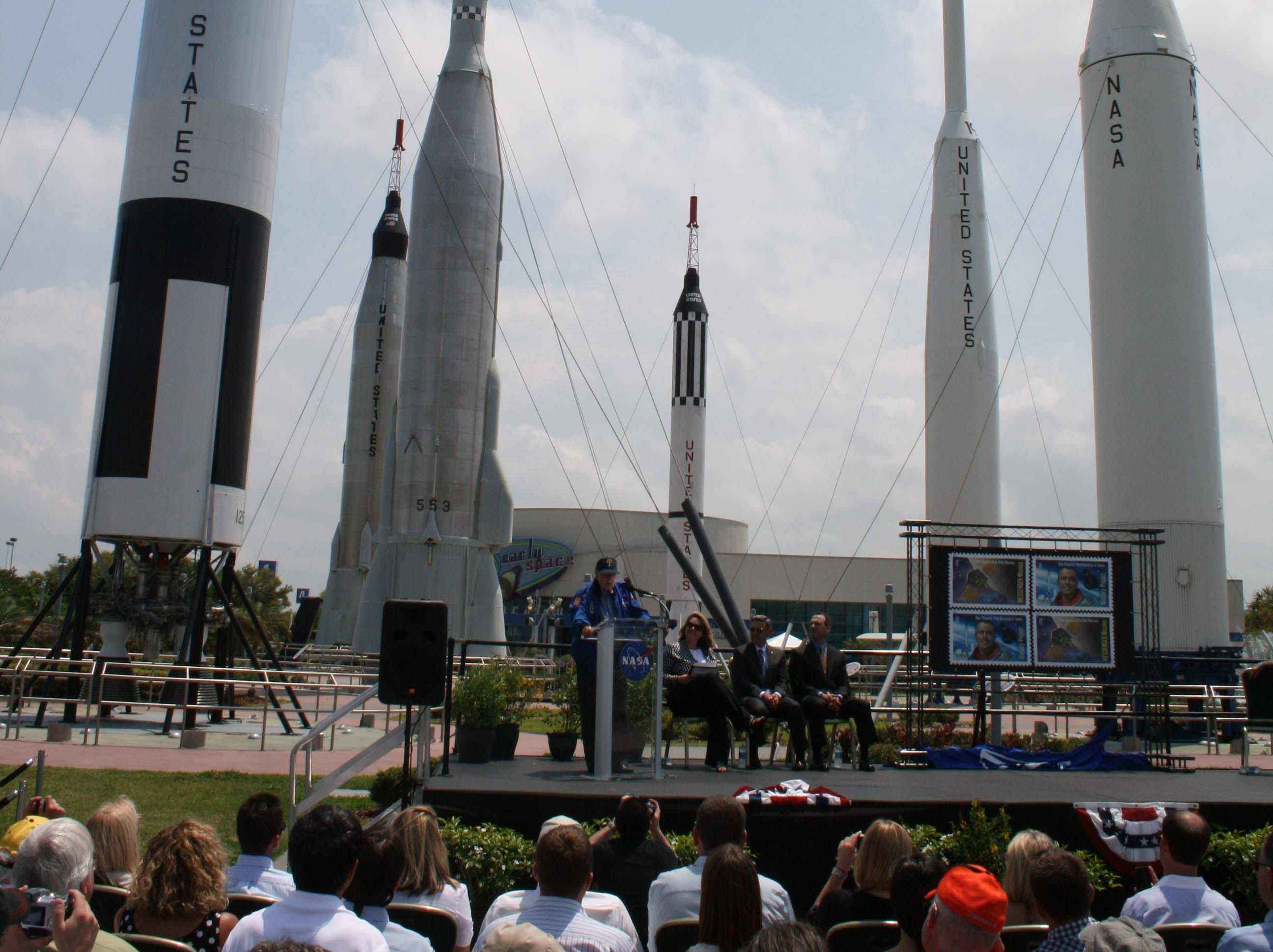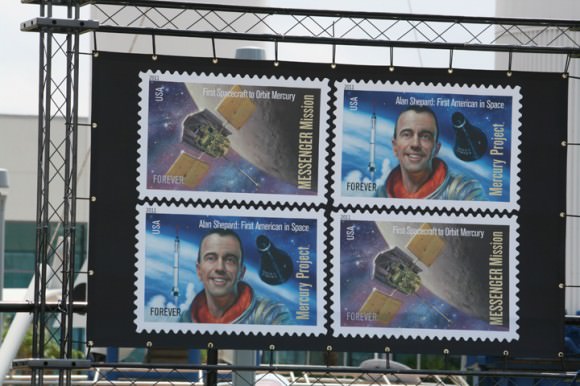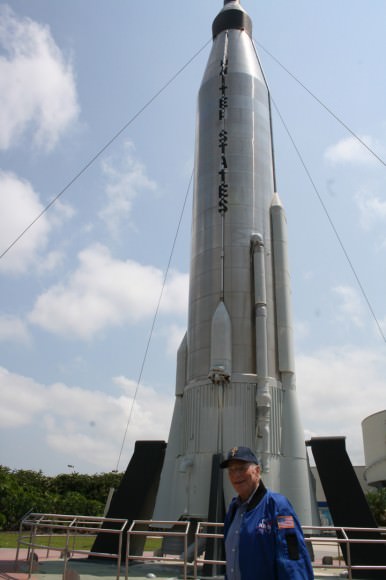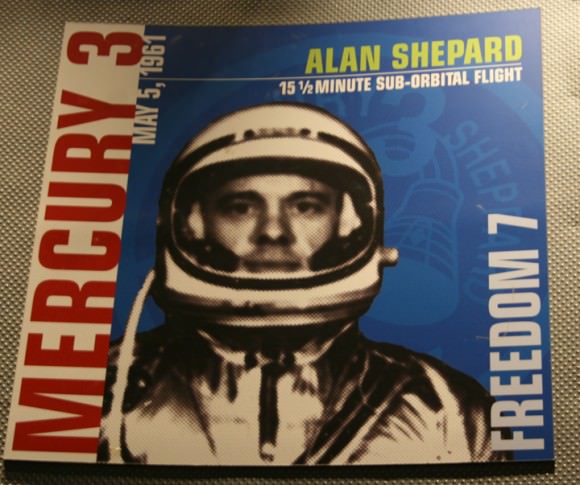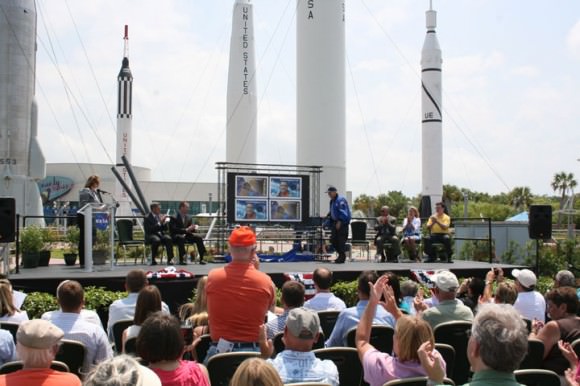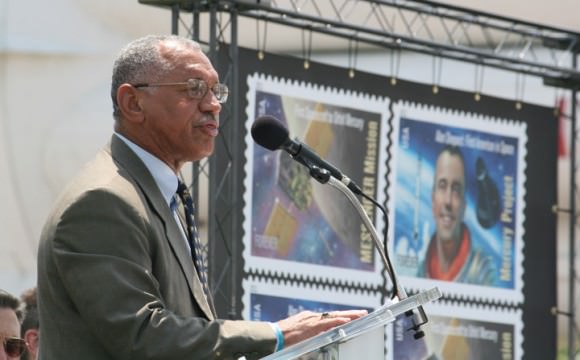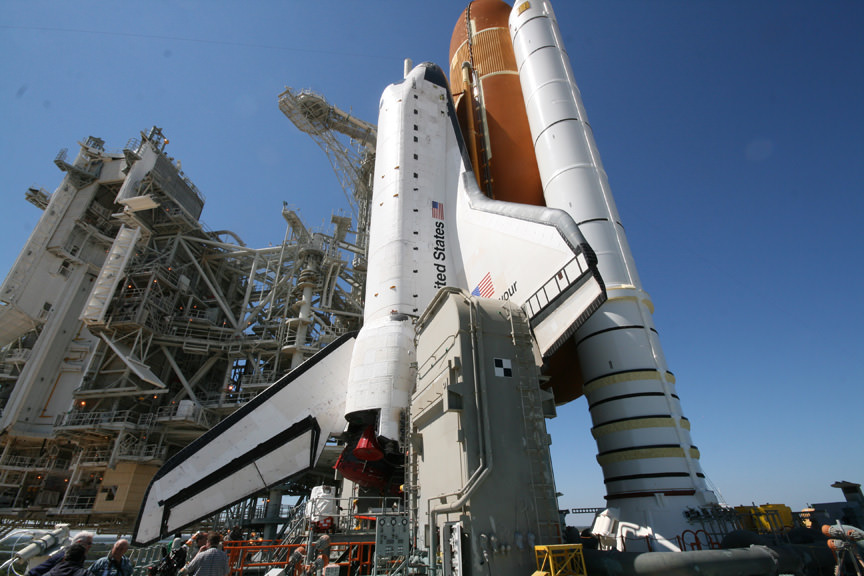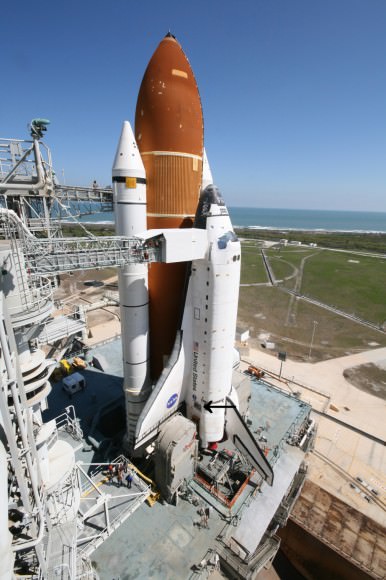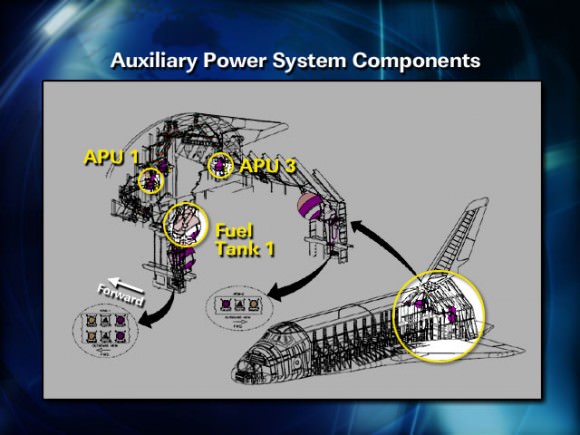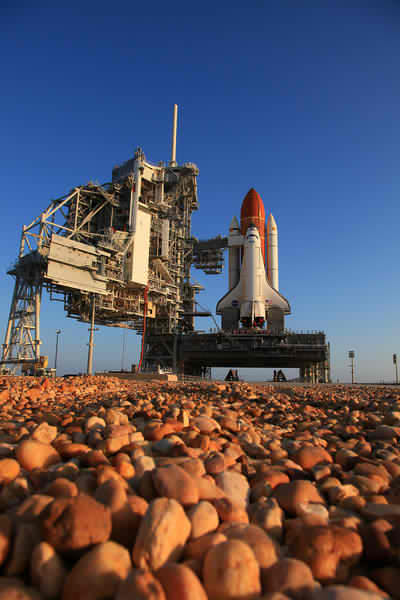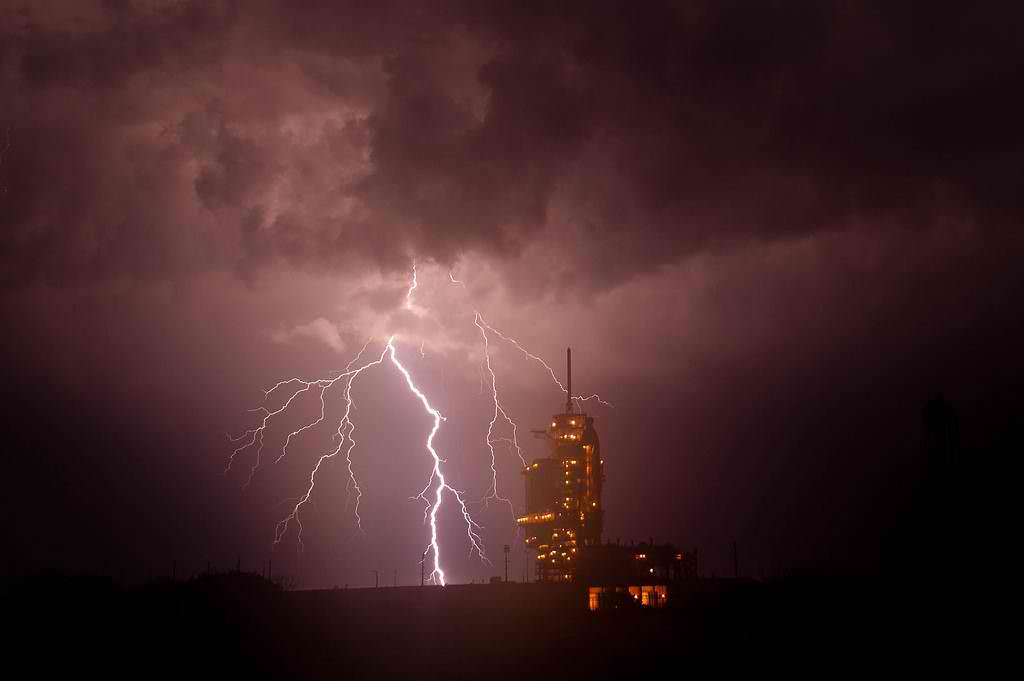[/caption]
KENNEDY SPACE CENTER – The all veteran crew for the last launch of Space Shuttle Endeavour flew back to Florida today for their second try to lift off into space on the STS-134 mission to the International Space Station. This follows the launch scrub called by Shuttle launch managers on April 29 caused by a malfunction of critical heaters inside one of the orbiters three auxiliary power units (APU’s) which power the ships hydraulics.
The weather forecast for Monday morning launch is currently “70% GO” and liftoff is targeted for 8:56 a.m. EDT on Monday, May 16. Stormy weather and rain is expected to sweep across central Florida over the weekend and clear out in time for the launch. But Sunday’s rain could potentially delay the retraction of the Rotating Service Structure – which protects the shuttle from bad weather – for a short time.
Shuttle Commander Mark Kelly and his five crewmates arrived at the Shuttle Landing Facility at the Kennedy Space Center early this morning (May 12) at 9 a.m. aboard the Shuttle Training Aircraft (STA) after flying in from the astronauts training base at the Johnson Space Center in Houston, Texas.
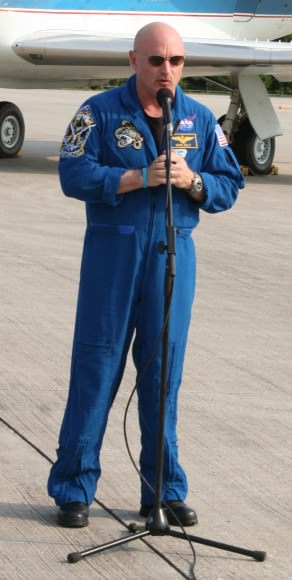
for the STS-134 mission speaks ro reports after crew arrives at KSC. Credit: Ken Kremer
“It’s great to be back,” said Kelly to the large crowd of reporters, including me, gathered to greet the crew. “We really appreciate all the hard work by the team that’s worked over the last couple of weeks to get shuttle Endeavour ready. We are really excited to be here, excited to launch, hopefully on Monday if the weather holds.
Kelly is joined on the crew by pilot Greg H. “Box” Johnson and Mission Specialists Mike Fincke, Andrew Feustel, Greg Chamitoff and Roberto Vittori. Vittori is a European Space Agency astronaut and spoke first in his native Italian language and then in English.
“Box” celebrated his 49th birthday today. “I can’t think of a more perfect way to spend my birthday then to come here with my crew a get ready to fly Endeavour next week.”
He also thanked the teams for resolving the APU issues. ”Hats off to Dana Hutcherson and her team for preparing Endeavour for this flow and finally a special thanks to the APU team for all the hard work you’ve done getting us to this point. Kudos for solving it and getting us back on track.”
Kelly and Johnson will fly practice landings in the STA in the remaining days prior to Monday’s launch. The STA is a modified Gulfstream II jet which handles like a space shuttle.
Mission Specialist Mike Finke whipped out a camera and photographed the gaggle of media as we were photographing them – a rare and thrilling experience for all of us. Finke tweeted the photo of us a short time later – and is included here.
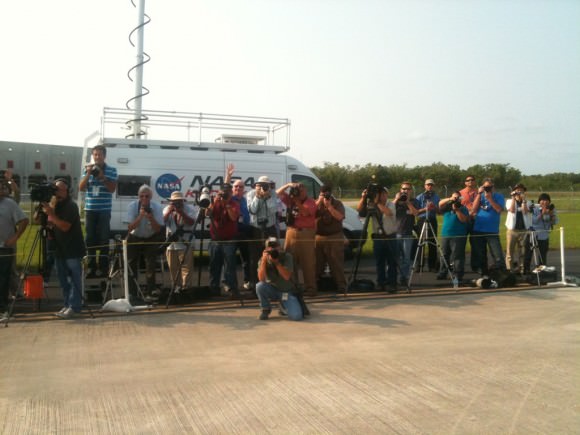
Technicians at the Kennedy Space Center have been working around the clock since April 29 to determine the cause of the heater failure and fix the problems. The malfunction was traced to a switch box located in the aft section of the shuttle. Shuttle workers swaped out the ALCA -2 load control assembly box. Then they retested the new unit and qualified it for flight.
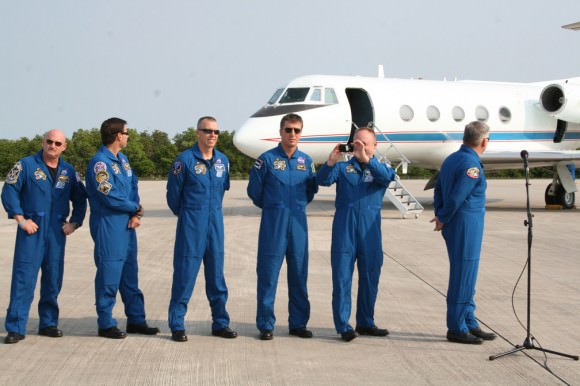
as we photograph the crew upon their arrival in Florida on May 12. See Finke’s twitpic above.
Credit: Ken Kremer
Humongous crowds are again expected to travel to prime viewing locations around the Kennedy Space Center and pack the local hotels, roadways and beaches. Flocks of tourists are already arriving in anticipation on Monday’s launch. About 750,00 folks had swarmed to Florida for the April 29 launch attempt.
STS-134 is the penultimate mission in the Space Shuttle Program. The last shuttle flight by Atlantis is expected to occur in early July, but a firm launch date has not yet been set.
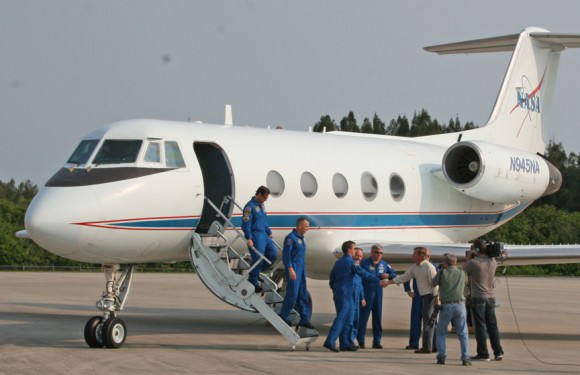
as they depart the Shuttle Training Aircraft. Credit: Ken Kremer
If you do attend Endeavour’s launch, send me your launch and crowd photos to post in an STS-134 launch gallery here at Universe Today.
Read my related stories about the STS-134 mission here:
NASA Sets May 16 for Last Launch of Endeavour; Atlantis Slips to July
Endeavour’s Final Launch further delayed another Week or more
On the Cusp of Endeavour’s Final Flight
Brush Fires Erupt at Kennedy Space Center during Endeavour’s Last Countdown
Commander Mark Kelly and STS-134 Crew Arrive at Kennedy for Endeavour’s Final Flight
President Obama to Attend Endeavour’s Last Launch on April 29
Shuttle Endeavour Photo Special: On Top of Pad 39A for Final Flight
Endeavour Mated to Rockets for Last Flight Photo Album
Endeavour Rolls to Vehicle Assembly Building for Final Flight
NPR Radio interview including Ken here:
Shuttle Fixes Will Take At Least One Week

